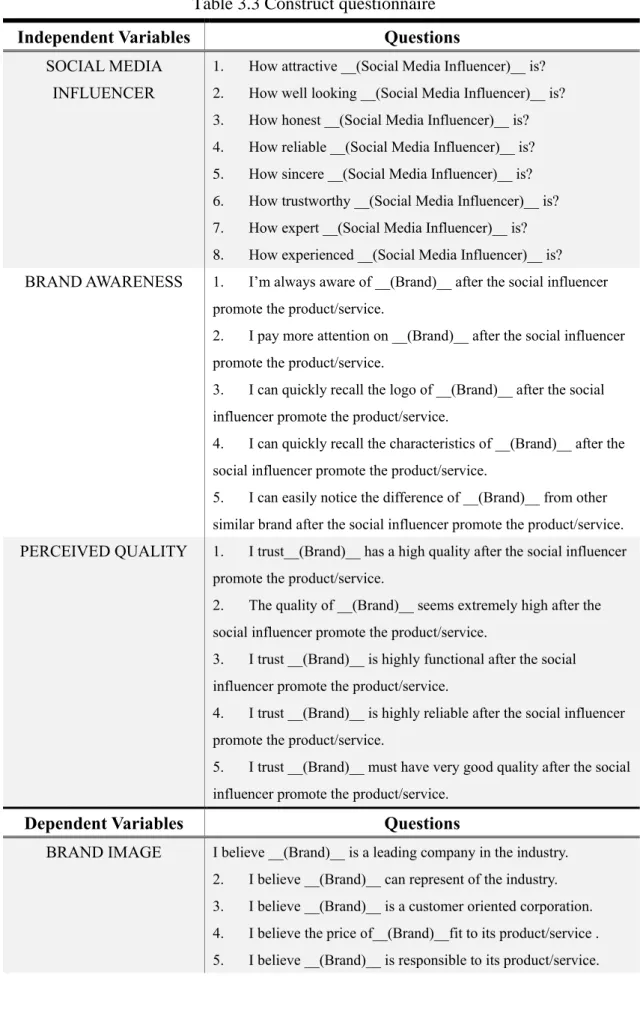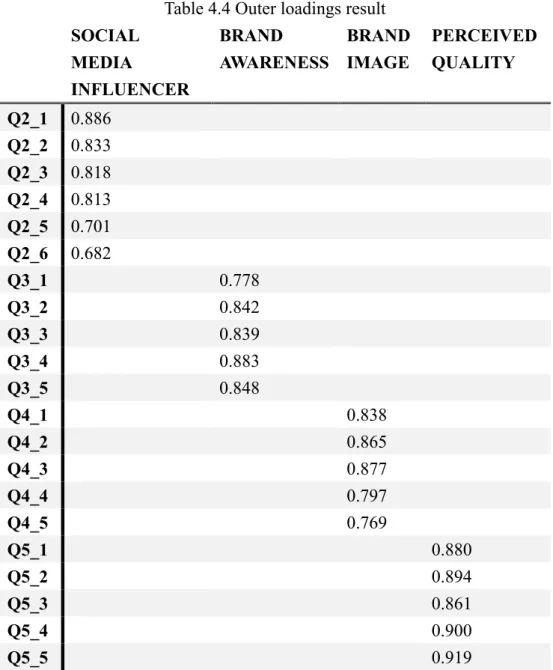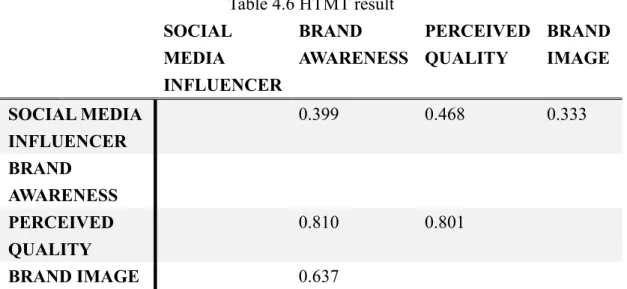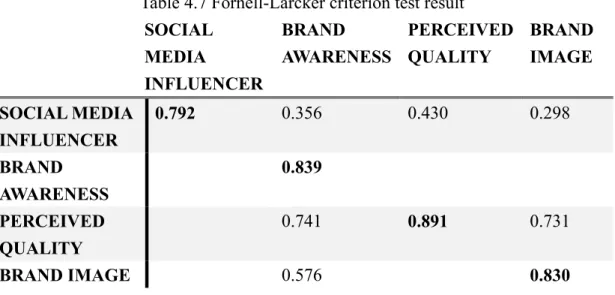The impact of influential social media on consumer brand recognition and consumer perception of brand quality. Among them, social media influencer is one of the new professions that have emerged as part of this trend. This study mainly investigates how the feelings represented by the personal characteristics of social media influencers in Malaysia affect the audience's perception of advertising products and the effect of brand image building.
The results show that social media influencers have a positive and significant effect on brand awareness and perceived quality; perceived quality has a positive and. It is shown that when social media influencers are used to advertise products, the perceived quality will be an important factor for advertising effect and brand image establishment.
INTRODUCTION
- Background of Study
- Problem Statement
- Research Objective
- Research Questions
- Research Hypothesis
- Significant of Research
- Chapter Layout
The objectives of the research are: (1) to examine the effect of social media influencers on brand recognition and perceived brand quality, (2) to examine the effect of brand recognition and perceived brand quality on brand image, and (3) to analyze the mediate effect of brand recognition and perceived brand quality between social media and brand image. However, very little research has examined the effect of social media influencers on brand recognition and perceived value. What characteristic of a social media influencer will have the most significant effect on perceived brand quality.
Which characteristic of a social media influencer will have the greatest effect on brand awareness. What is the significant relationship between perceived brand quality and brand awareness between social media influencer and brand image.
LITERATURE REVIEW
- Introduction
- Social Influencer for Marketing
- Brand Awareness
- Perceived quality
- Brand Image
- Theoretical Framework and Research Framework
- Past Theoretical Framework
- Research Framework
- Hypothesis Developments
Channels created on social media allowed social media influencers to promote their own personal content, spread value and ideas, while either users, companies, bandleaders can be any of its audience. Therefore, marketing value has been created for brands from influencers on social media by developing followers on specific content. Several theories have been proposed to explain the influence of social media influencers on brand attitude, including naïve theories related to social.
Through these validated theoretical models, it can be understood that social media influencers can positively influence consumers' expected brand attitude and increase consumers' purchase motivation. Through the information transmitted by social media influencers, consumers can create their expected psychology and attitude towards brands and products and services, and then convert them into consumption motivations based on this. This study believes that in addition to the previous verification of researchers that the information transmitted by social media.
According to research by Kardes, Posavac and Cronley (2004), the influence of social media influencers is positively related to consumer brand attitude. A large part of the influence of social media influencers consists of their personality traits, so the first hypothesis of this study is that the personal characteristics of social media influencers will influence consumers' expected quality of their brands. approved. As social media influencers continue to provide rich information and preferred content to their followers over a period of time, which of course includes brands and related products and services endorsed by the social media influencer, this relationship will increase many followers' interest in being adopted increased brand awareness and a more positive attitude toward the brand.
However, most studies examine the influence of advertising content on consumers, and few focus on whether the characteristics of social media influencers who endorse brands also influence consumers' brand awareness. This study concludes that social media influencers' advertising content and platform usage will influence consumers' brand awareness, and that the own characteristics of social media influencers endorsing brands will also greatly influence consumer brand awareness. Because the research framework based on this study confirms that social media marketing activities have a significant impact on brand image, have a positive and significant effect, and that brand image has a positive and significant effect on brand loyalty (BİLGİN, 2018).

METHODOLOGY
- Introduction
- Research Design and Data Collection
- Research Design
- Data Collection
- Research Sampling
- Research Technique
- Data Processing
- Data Analysis
- Questionnaire Design
- Conclusion
The variables in this study, social media influencer, brand awareness, perceived quality and brand image, are suitable for verifying relationships in this way. The subjects of this study are people with purchasing power who habitually use any form of social media in Malaysia. Whether or not the research questionnaire should be completed is based on the personal wishes of the invitees.
In the design of the research questionnaire and the inspection after completion of the design, the errors in the sentence are avoided to ensure that the subjects understand the questions of the questionnaire. During the design of the questionnaire, people other than the researcher were also helped to read the questions to clarify whether the sentences of the questions were fluent and easy to understand. After all data has been coded, the data can be imported into SPSS and SmartPLS for data analysis, then the system automatically analyzes the completed data.
Descriptive Statistical Analysis: Descriptive statistical analysis and explanation were performed for the basic data of the subjects in the questionnaire, and the distribution of gender, age, education level, etc. Therefore, the combined reliability is used as the measurement index, and the coefficient value should be between 0 and 1 lying down. This study uses Structural Equation Modeling of Variance as a statistical method to test hypotheses, allowing to test the explanatory power of dependent variables (whether explaining a causal relationship is significant), and the bootstrapping method to test predictions between independent and.
This chapter will focus on four constructs namely social media influencer, brand awareness, perceived quality and brand image. Variables are defined with references, description of operational definitions and measurement items of specific constructs are developed. The scale design is divided into three steps, which are respondents' social media usage habits, scoring question preambles, and construct alignment items (including social media influencer, perceived quality, brand awareness, and brand image). , four items in total). construct) and final background information.
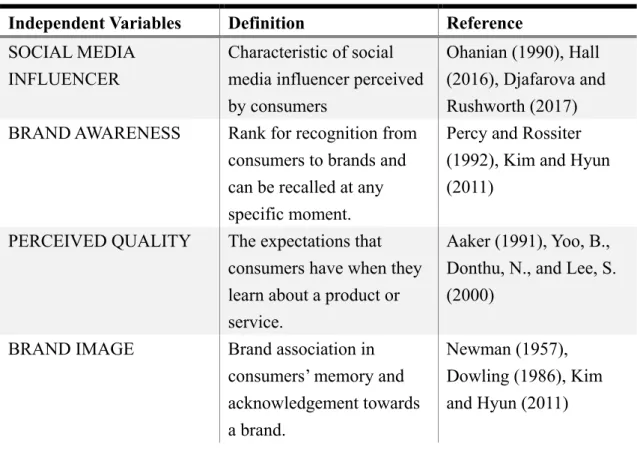
DATA ANALYSIS
- Introduction
- Reliability ad Validity Test Result
- Cronbach’s α
- Composite Reliability
- Outer Loadings
- Average Variance Extracted
- Heterotrait-Monotrait Ratio (HTMT)
- Fornell-Larcker Criterion
- Model Fit
- Structural Equation Modeling
- Hypothesis Testing
- Mediation Effect Testing
Composite reliability is testing the homogeneity between items, that is, measuring the internal consistency of the constructs in the study. The construct must explain more than 50% of the index variance to have good index reliability, and the standardized factor loading must be greater than 0.5 (50%) square root of 0.708 to have good index reliability. It can be seen from Table 4.4 that the factor loadings all meet the recommended standard values defined by researchers.
The average variance extracted is the average value of the explanatory power of the construct for each index, and the community between the constructs is tested. 2014) suggested that the mean variance extraction amount is greater than 0.5, indicating that each construct explains more than 50% of the index variance and has good convergent validity. Although some experts suggest that the average variance extraction amount should be greater than 0.5, all factor loadings must be greater than 0.7 to achieve this condition.
Considering the practical factors of data collection, an average amount of variation extraction greater than 0.36 is the minimum acceptable standard (Fornell and Larcker, 1981). Experts consider the standard of HTMT values lower than 0.9 to be acceptable (Henseler et al., 2015). The Fornell-Larcker criterion method for extracting the average variance requires that the square root of the AVE of an individual construct is greater than the correlation.
If the square root of the AVE of a single construct is smaller than the correlation coefficient of other constructs, it represents the same construct and cannot be distinguished. SRMR is the fit degree of the test model, and the value is between 0 and 1, and the closer it is to 0, the better the fit degree. Among them, Saturated Model means that the number of paths in the research model is the same as the number of correlations between the constructs in the evaluation model, and Estimated Model is the calculation of the data and paths in the research.
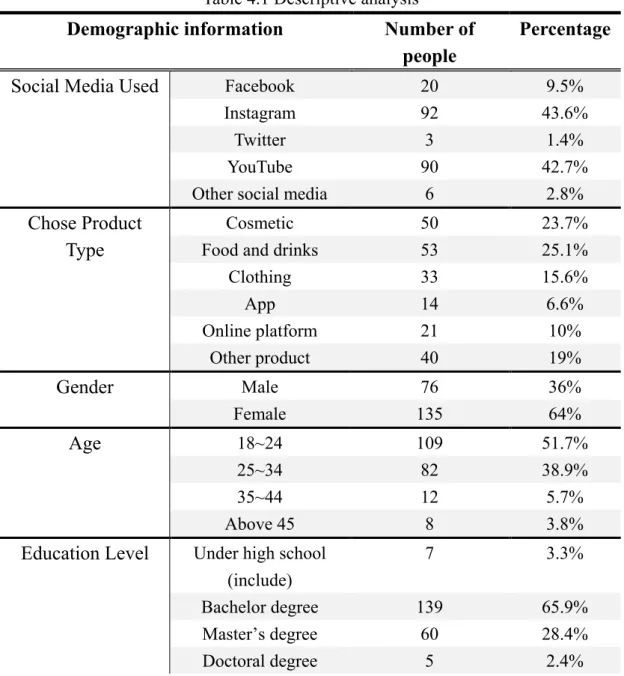
DISCUSSION, IMPICATIONS AND CONCLUSION
- Introduction
- Discussions of Major Findings
- Discussions of Statistical Analyses
- Social media influencers and consumers’ brand awareness of brands34
- Consumers’ brand awareness and brand image
- Mediation effect from customers’ perceived quality between social
- Implications of the Study
- Limitations of the Study
- Recommendations for Future Research
- Conclusion
The results of this study confirm that the personality characteristics of social media influencers and their public image are positively related to consumer expectations for products or services. It has been verified that the image of social media influencers among consumers will influence the effect of promoting products and services. The better the positive image of social media influencers (based on the research questionnaire), the more beneficial it is to increase consumer expectations for products and services.
The results of this study pointed out that not only the content of advertisements, but also the social media influencer's own moral image and public impression will also have an impact on the brands endorsed by them. When the image of social media influencers is more positive, the results presented are the same as those of Dehghani's research. Not only the content of advertisements, but also social media influencers are the focus to influence brand awareness.
This study presents whether consumers will influence the image and characteristics of social media influencers on the products and services they endorse. From the research results, it is known that consumers' perceived quality and brand awareness of brand products and services are influenced by the perception of social media influencers. This study focuses on the social media influencers who support brands themselves and also shows that their personality traits should also be taken into account when formulating marketing strategies.
Brands use social media influencers to endorse them, which not only allows brands to convey. But which social media influencers are often chosen as brand spokespeople is easy to ignore. Consumers' perceived quality will have a partial mediating effect between social media influencer and brand image.
Therefore, we can further explore the endorsement effect and influence mechanism of social media influencers. The purpose of the research is to investigate the effect of social media influencers promoting the product/service and the effect of promoting brand image through brand awareness and perceived quality.

